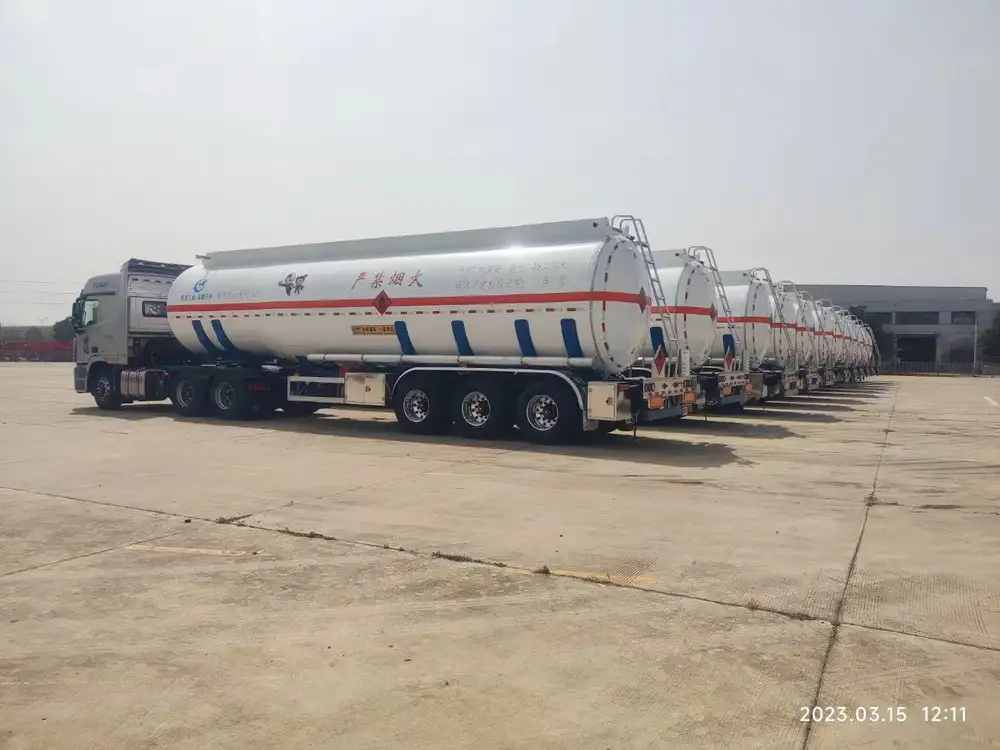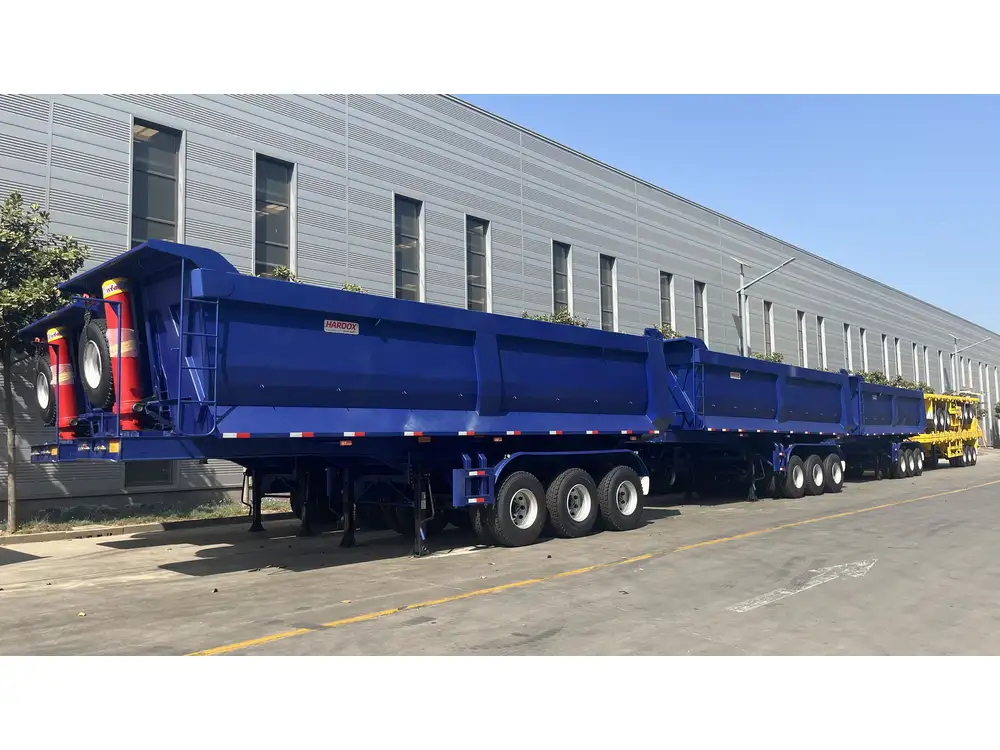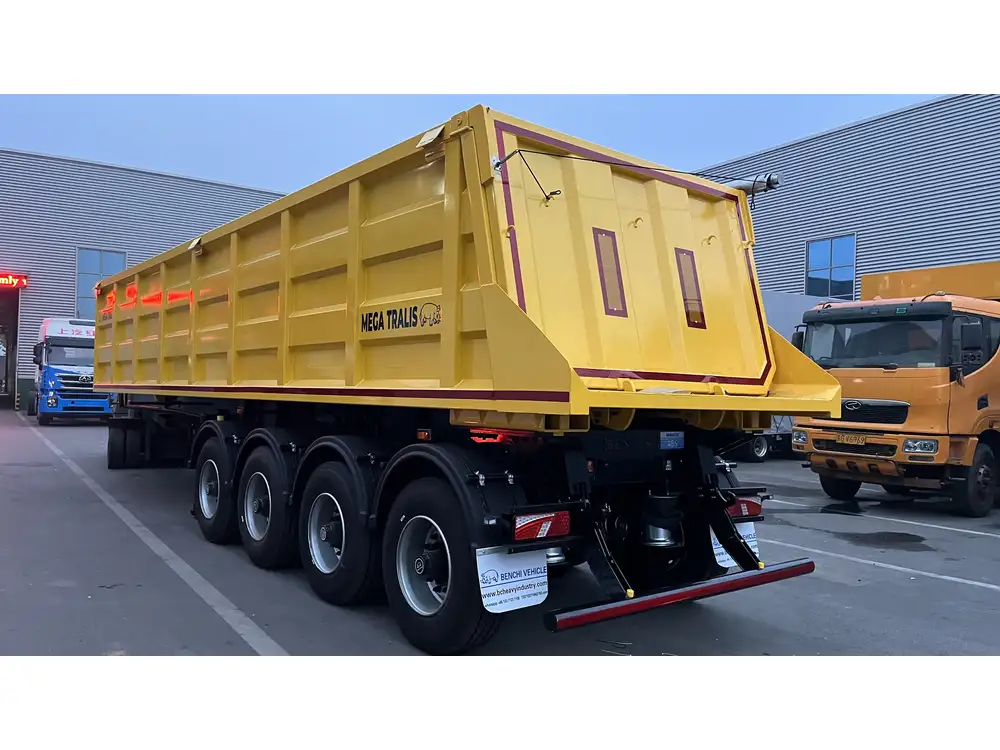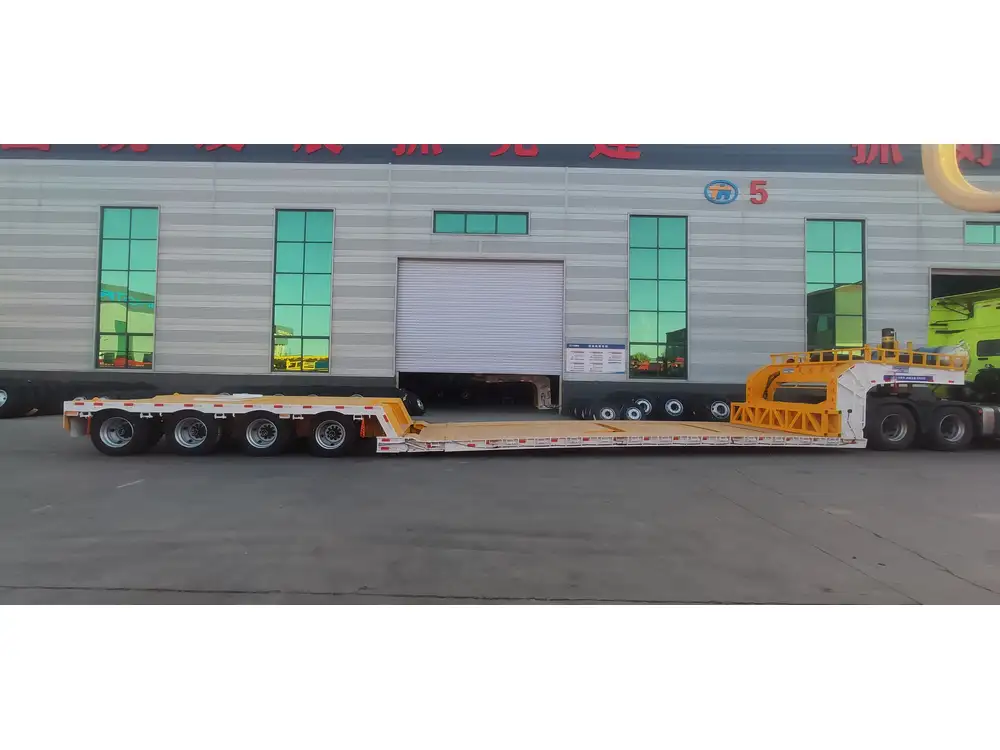Calculating the size of a semi-trailer is crucial for both manufacturers and operators. The dimensions of semi-trailers significantly affect their capacity, maneuverability, safety, and compliance with regulations. In this guide, we delve into the various sizes available, their implications, and how to choose the right size for your needs.
What is a Semi-Trailer?
A semi-trailer is a type of trailer that is partially supported by a truck. Unlike full trailers, semi-trailers lack a front axle and rely on the tractor unit for support. This design allows for increased cargo capacity and flexibility. Semi-trailers are commonly used for transporting goods across long distances and are integral to the freight and logistics industry.
Common Sizes of Semi-Trailers
Semi-trailers come in various sizes, tailored to different transportation needs. Below is an overview of the standard sizes:
| Type of Semi-Trailer | Length (ft) | Common Width (ft) | Height (ft) | Purpose |
|---|---|---|---|---|
| Standard Van | 48-53 | 8.5 | 13.5 | General cargo |
| Reefer | 48-53 | 8.5 | 13.5 | Temperature-sensitive cargo |
| Flatbed | 48-53 | 8.5 | 5.5 | Heavy machinery, construction materials |
| Drop Deck | 48-53 | 8.5 | 10-12 | Tall cargo that needs extra clearance |
| Tankers | 48-53 | 8.5 | 13.5 | Liquids, gases |
| Auto Transport | 75-80 | 8.5 | 10 | Vehicles |

Length Variations
The length of a semi-trailer often determines its cargo capacity. Here’s a more granular breakdown:
- Standard Length (48 Feet): Traditionally used for transporting bulky items like furniture and other goods that require more space but do not exceed weight limits.
- Extended Length (53 Feet): This size has become the industry standard for general freight, offering increased capacity but requiring awareness of bridge laws and state regulations.
Width Standards
Most semi-trailers have a standard width of 8.5 feet, optimized for road safety and maneuverability. Wider models, however, can be utilized for special cargo requirements.
Height Considerations
Height can vary, but the federal height limit for semi-trailers is 13.5 feet. Low-profile options are available for items that require specific clearance when navigating under bridges or low-hanging structures.

Factors Influencing Semi-Trailer Size Choice
Choosing the right size of a semi-trailer is influenced by numerous factors:
1. Cargo Type
The nature of the cargo heavily dictates the size and type of semi-trailer required. For example:
- General Freight: 53-foot standard vans excel in general freight applications due to their versatility.
- Refrigerated Goods: Reefer trailers match the length of standard vans but provide crucial temperature control features.
- Oversized Items: Flatbed trailers accommodate larger dimensions and unique shapes, requiring secure strapping systems.
2. Regulatory Compliance
Navigating the rigorous maze of transportation regulations is essential. Each state and jurisdiction has unique restrictions regarding trailer length, width, and height.
- Interstate Regulations: While federal law sets certain height limitations, many states restrict trailer lengths to 48 feet when not traveling on the interstate system.
- Permits for Oversize Loads: Certain trailers must obtain special permits if they exceed standard dimensions.

3. Weight Capacity
Each semi-trailer type is designed to handle a specific weight, which determines loading limits. The gross vehicle weight rating (GVWR) is essential in evaluating how much cargo can be safely transported without violating weight regulations.
| Semi-Trailer Type | Typical GVWR (lbs) | Max Payload (lbs) |
|---|---|---|
| Standard Van | 80,000 | ~45,000 |
| Reefer | 80,000 | ~45,000 |
| Flatbed | 80,000 | ~45,000 |
| Tanker | 80,000 | ~48,000 |
4. Route Considerations
The planned route for transporting goods can influence the size of the semi-trailer. Factors include:
- Urban Areas: Narrow streets may call for shorter, more maneuverable trailers.
- Rural Routes: Increased space and open road conditions may allow for longer trailers.
5. Fuel Efficiency
Semitrailer size impacts fuel efficiency, with larger trailers generally impacting fuel consumption differently.
- Aerodynamics: Longer trailers can create greater air resistance, leading to increased fuel expenses.
- Load Optimization: Appropriate load distribution lowers fuel consumption by maximizing the payload and maintaining balance.

How to Measure a Semi-Trailer
To accurately determine the size of a semi-trailer, follow these steps:
Measuring Length
Use a measuring tape to measure from the front of the trailer to the back. Ensure that the tape is straight and not dragged along the ground for an accurate reading.
Measuring Width
Width is typically predetermined for standard models, but for nonstandard trailers, measure across the widest point of the trailer.

Measuring Height
When measuring height, measure from the ground to the highest point of the trailer. This can be particularly relevant when selecting trailers for low-clearance routes.
Common Conversion and Capacity Calculations
Understanding how to derive usable space and capacity from your semi-trailer dimensions can enhance operational efficiency. Here are some straightforward calculations:
Cubic Footage Calculation
Determining the cubic footage of space inside the trailer is crucial. The formula is simple:
[ \text{Cubic Footage} = \text{Length} \times \text{Width} \times \text{Height} ]For a 53-foot standard van:
- ( 53 \times 8.5 \times 13.5 = 6,127.5 \text{ cubic feet} )

Payload Calculation
To calculate the payload capacity of a semi-trailer:
Subtract the Weight of the Trailer from the GVWR:
[ \text{Payload Capacity} = \text{GVWR} – \text{Empty Weight} ]
For a standard flatbed trailer with an empty weight of 12,000 lbs:
- ( 80,000 – 12,000 = 68,000 \text{ lbs original payload} )
Concluding Thoughts
Selecting the right size of a semi-trailer involves understanding a multitude of factors that influence efficiency, safety, and legal compliance. Whether you’re transporting oversized machinery or standard freight, knowing the nuances of semi-trailer dimensions will empower your decisions and enhance your operational capabilities.
Frequently Asked Questions (FAQs)
What is the average height of a semi-trailer?
The average legal height of a semi-trailer in the U.S. is 13.5 feet.Can I use a 53-foot trailer in every state?
While many states allow 53-foot trailers on interstate highways, some may impose restrictions on state highways.What kind of trailer should I choose for transporting liquids?
A tanker semi-trailer is designed specifically for that purpose, ensuring safety and regulatory compliance.How do weight limits affect cargo choice?
Depending on the GVWR and payload capacity of your semi-trailer, choosing lighter goods allows for higher volume with compliance, while heavier goods may hit the limit sooner.
In the evolving landscape of logistics, understanding the fundamental aspects of semi-trailer sizes can make a significant difference in operational efficacy. Choosing the right trailer means choosing the right path to efficiency and cost-effectiveness, ensuring that your freight operations remain competitive and compliant with industry standards.



